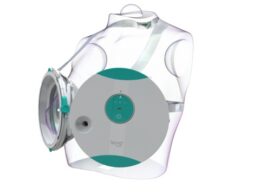the health
transformation
knowledge portal
Joaquim Cardoso MSc
March 4, 2024
This summary is based on the article “Undiagnosed Cancer Cases in the US During the First 10 Months of the COVID-19 Pandemic”, published by The JAMA Network and written by Todd Burus, Feitong Lei e Bin Huang on February 22, 2024.
What is the message?
The COVID-19 pandemic led to a substantial decrease in diagnosed cancer cases in the United States during the first 10 months of 2020.
This disruption in cancer detection underscores the importance of reengaging individuals in recommended cancer screenings and routine health care visits.

ONE PAGE SUMMARY
What are the key points?
- A population-based cross-sectional study analyzed cancer incidence trends in the US from March 1 to December 31, 2020.
- All-sites cancer incidence rates were significantly lower than expected during the height of the pandemic response (March-May 2020) and continued to be lower through June to December 2020.
- The study estimated a deficit of 134,395 potentially undiagnosed cancer cases during the first 10 months of the pandemic.
- Prostate, female breast, and lung cancers accounted for the largest numbers of potentially missed cases.
- Disruptions were observed across various cancer sites, stages of diagnosis, and population subgroups.
What are the key statistics?
- Observed rates of all-sites cancer incidence were 28.6% lower than expected during March-May 2020 and 6.3% lower during June-December 2020.
- Screenable cancers saw a total rate reduction of 13.9% compared with the expected rate.
- Prostate cancer accounted for the largest number of potentially missed cases (22,950), followed by female breast (16,870) and lung (16,333) cancers.
- Early-stage cancer diagnoses were significantly lower than expected during the study period, indicating delays in detection across various cancer types.
What are the key examples?
- Female breast cancer diagnoses showed evidence of recovery to previous trends after the first 3 months of the pandemic, but levels remained low for colorectal, cervical, and lung cancers.
- States with more restrictive COVID-19 responses experienced significantly greater disruptions in cancer diagnoses initially, but these differences became nonsignificant for most sites by December 2020.
- Disparities in disruptions were observed among population subgroups, with notable differences in lung cancer diagnoses by gender and age, and disruptions in screenable cancer rates among older individuals.
Conclusion
The study highlights the substantial disruption to cancer diagnoses in the US during the first 10 months of the COVID-19 pandemic.
The findings underscore the importance of implementing strategies to recover the deficit in cancer screening and detection, especially focusing on high-risk populations and cancer types.
Additionally, the study emphasizes the need to consider the impact of future disaster planning on cancer detection and prevention efforts.
To write the original publication, click here.











